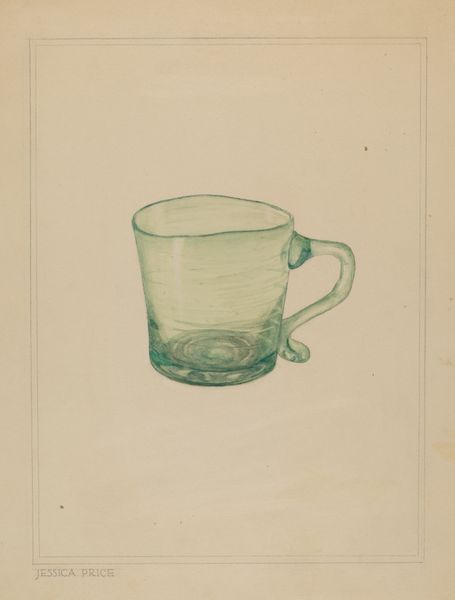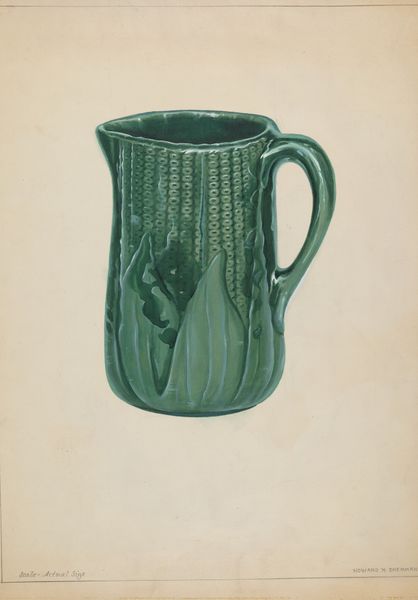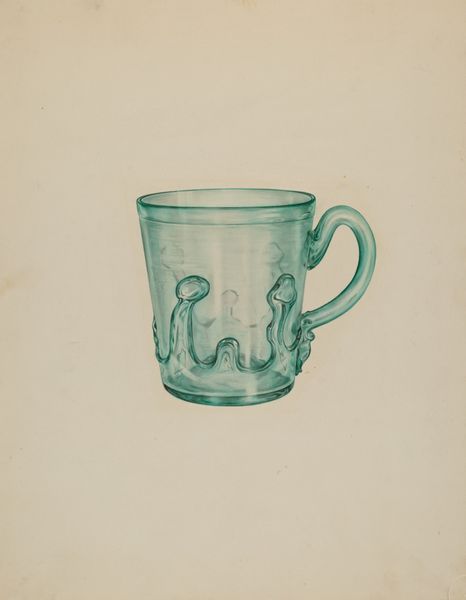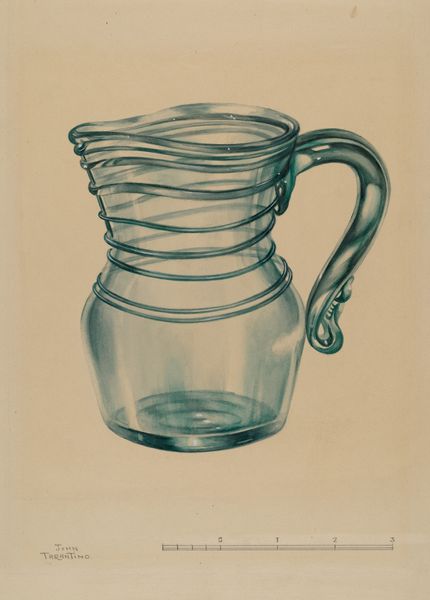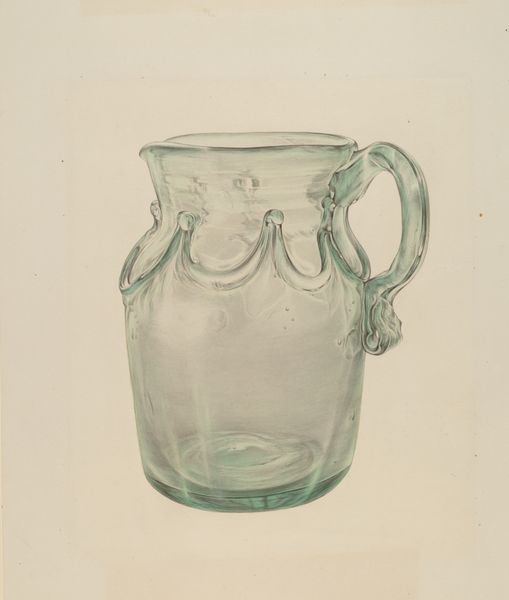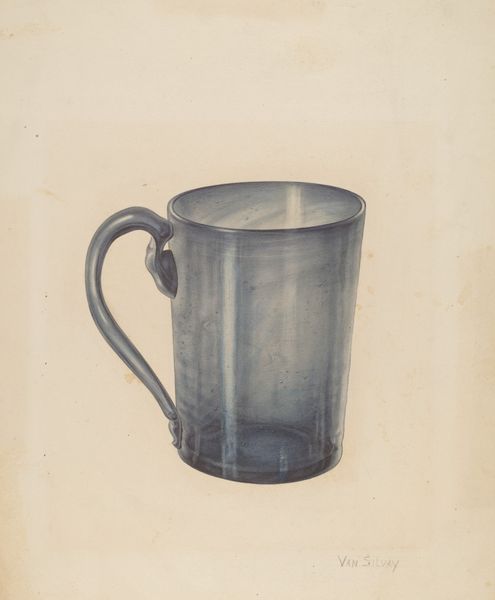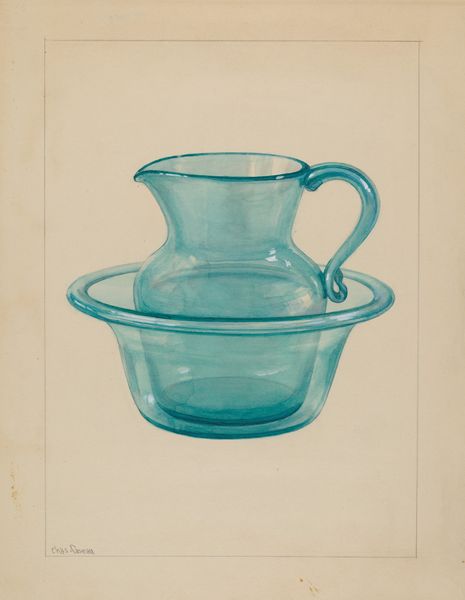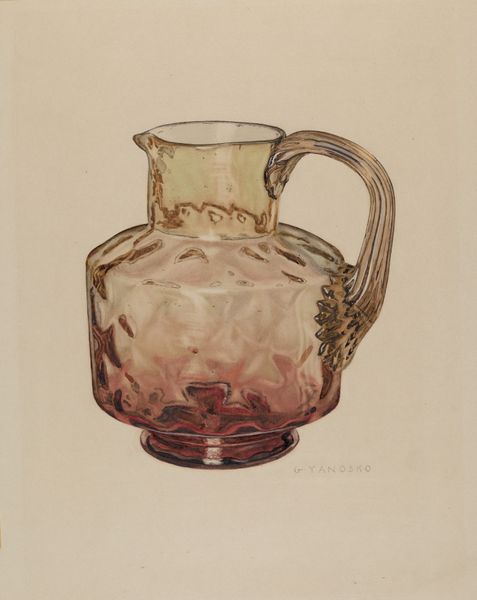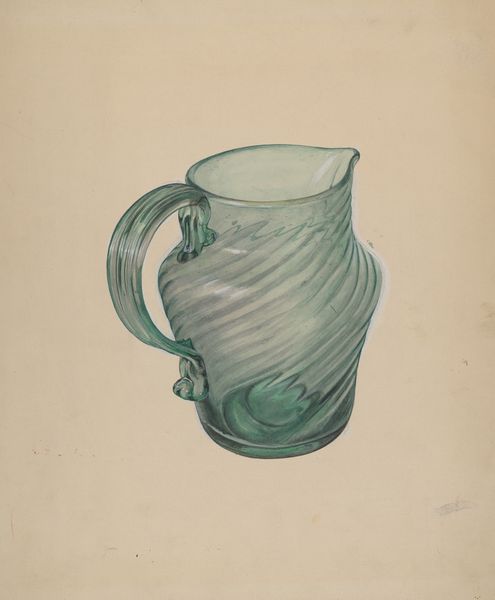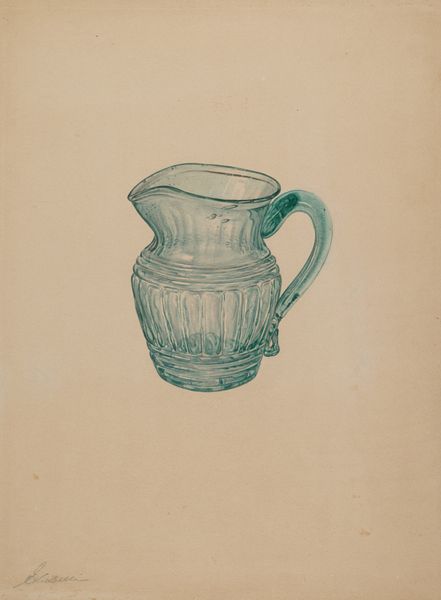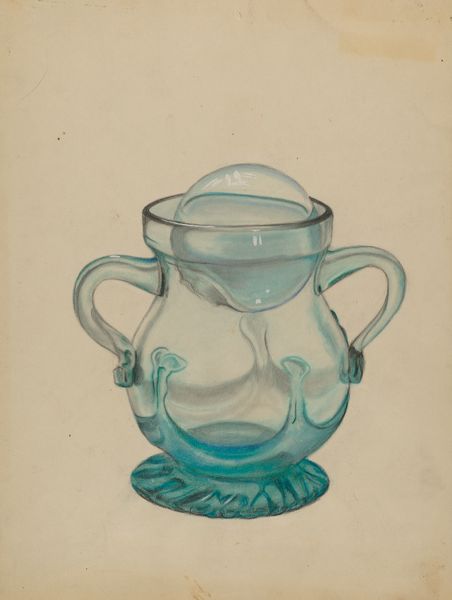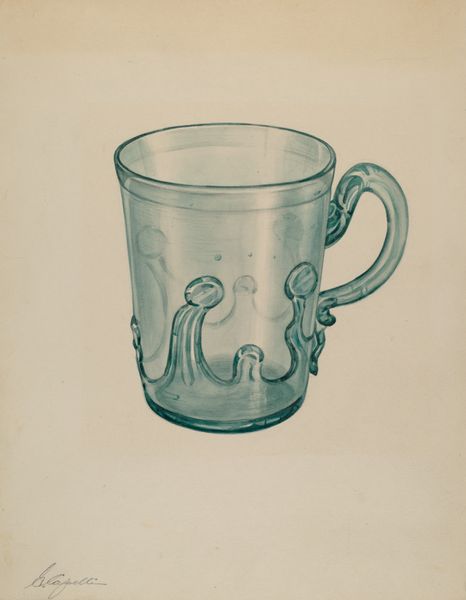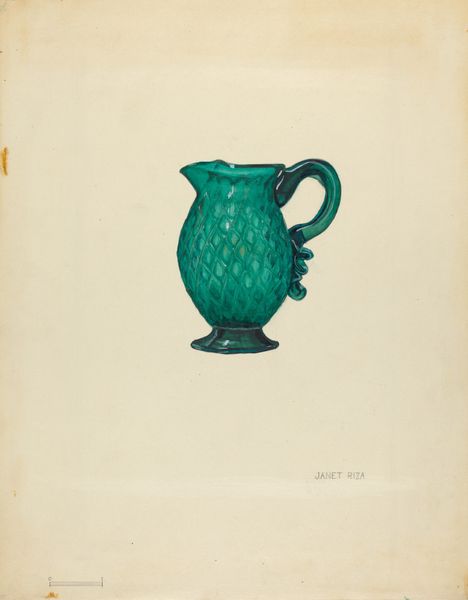
drawing, watercolor
#
drawing
#
oil painting
#
watercolor
#
pencil drawing
#
watercolour illustration
#
watercolor
#
realism
Dimensions: overall: 32.7 x 27.1 cm (12 7/8 x 10 11/16 in.)
Copyright: National Gallery of Art: CC0 1.0
Curator: Frank Gray's "Mug," likely created around 1939, presents us with a rather unassuming object rendered in watercolor. What strikes you immediately about this piece? Editor: It’s the quiet translucence that captures my attention. The pale green hues, the subtle variations in tone – there's a delicate realism, a remarkable study of light and glass. Curator: Indeed. Gray painted this during a period when many artists were involved in government-sponsored art projects. It makes you wonder, was this subject matter a deliberate choice reflecting everyday life? Editor: Possibly. Yet the attention to form is undeniable. The curve of the handle, how the light defines the edges of the mug…it's about the artist's gaze transforming the ordinary into something quite visually compelling. Note the economy of line and shape, it is skillfully designed. Curator: It definitely invites us to consider how the context of the time may have influenced the subject. Was it a rejection of more elaborate artistic expressions, embracing the simple beauty available even in times of austerity? This unassuming mug tells us a lot about society at this moment. Editor: I'd suggest it transcends pure representation. There's an almost Platonic essence of "mug-ness" being conveyed. It exists as form, independent from social commentary. We're presented with line, form, light. A world stripped down to pure artifice. Curator: Well, both form and the realities around the artist contribute meaning. The painting asks: What are we drinking? How did ordinary Americans participate in the consumption culture? It raises awareness of what art means in our communities. Editor: An object lesson in light, texture, and form. The subtle shift and contrast on the material suggest transparency that only masters can grasp. The piece exemplifies skillful observation. I admire the focus on pure sensory information in painting. Curator: To consider it within its era, you understand art isn’t made in a bubble; and understanding its public accessibility is important. Its existence prompts many questions. It’s an exciting contribution when museums share pieces like this with visitors. Editor: For me, "Mug" reveals the underlying structure of seeing. Its power resides in how it makes us newly aware of line and form, color and shape. Its transparency illuminates aspects of the world.
Comments
No comments
Be the first to comment and join the conversation on the ultimate creative platform.
